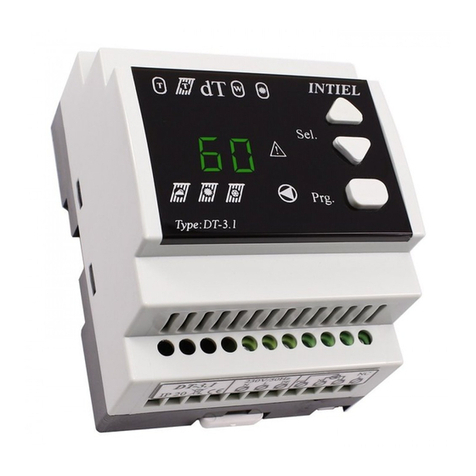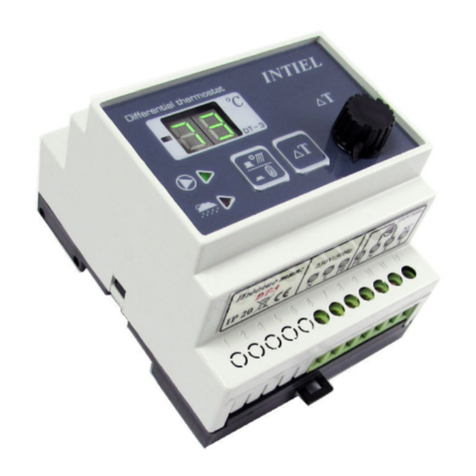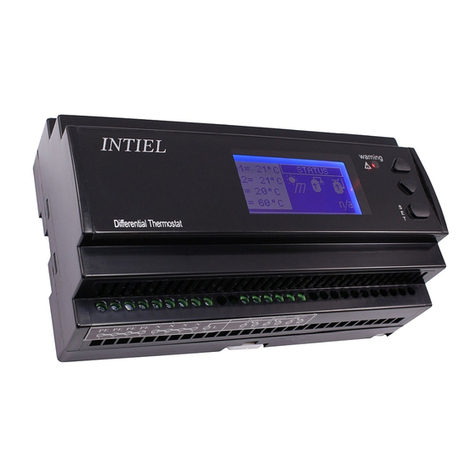
Installations equipped with two water tanks
А) Normal operation
- The circulation pump 1 is being switched on and the heating of the water
tank is being started by means of the solar panels if temperature T2 in water tank 1 is
lower than the assigned one Tzad and if there is a positive difference ∆t between the solar
panel and the water tank temperatures grater than the assigned dТ (Т1-Т2> dТ),
The circulation pump is being stopped if during water tank heating ∆t is being
decreased, thus after ∆t gets equalized with the assigned one dT.
The heating of the water tank at the above mentioned conditions is going until the
water tank temperature is getting the same with the assigned one Tzad. Afterwards
the pump is being switched off and the heating is being stopped (relay output 1).
- when water tank 1 reaches its assigned temperature, then the operation of circulation
pump 1 is being stopped and the heating of the second water tank is being started
as circulation pump 2 is being switched on. In this case circulation pump 2 will be started
in case temperature T3 in water tank 2 is lower than Tzad1 and there is a positive
difference ∆t between solar panel and water tank, grater than the assigned one
temperatures dТ (Т1- Т3>dT) (relay output 1 and 2).
- the operation of circulation pump 2 is being stopped in case of reaching Tzad1,
equalizing ∆t with dТ or with decreasing of T2 concerning water tank 1 bellow Tzad.
In the last case after circulation pump 2 is being switched off circulation pump 1 is being
switched on for heating of water tank 1.
-If under the above mentioned conditions the solar panel temperature is going down
bellow Tcmin, then both circulation pumps operation will be stopped by force, despite of
conditions ∆t>dТ and Т2<Tzad, Т3<Тzad1 could be available. (relay output 1 and 2)
- in case the solar panel temperature falls bellow Tdef, circulation pump 1 is being
switched on by force, never mind it has been switched off due to solar panel
temperature decreasing bellow Tcmin. (only in case the defrost option is activated)
- if during the previous mentioned operation mode water tank 1 temperature falls down
bellow Tbmin, then the circulation pump is being switched off as the solar panel
defrosting is being stopped.
В) Emergency operation
-if during water tanks heating, the solar panel temperature exceeds Tcmax, the
circulation pumps are being started by force in order to cool the solar panel. The previous
mentioned will be fulfilled despite of temperatures T2 and T3 of the water tanks
could exceed Tzad and Tzad1 (relay output 1 and 2).
- if during the above mentioned emergency mode the water tank temperatures reach
the critical maximum value Tbmax, then the circulation pumps are being switched
off never mind it could reflect to solar panel overheating. Thus the water tank temperature
has a higher priority than the solar panel one.
- when temperature T3 in water tank 2 exceeds Tvmax a valve is being switched on in
order to drain the hot water of the water tank (relay output 3).






























